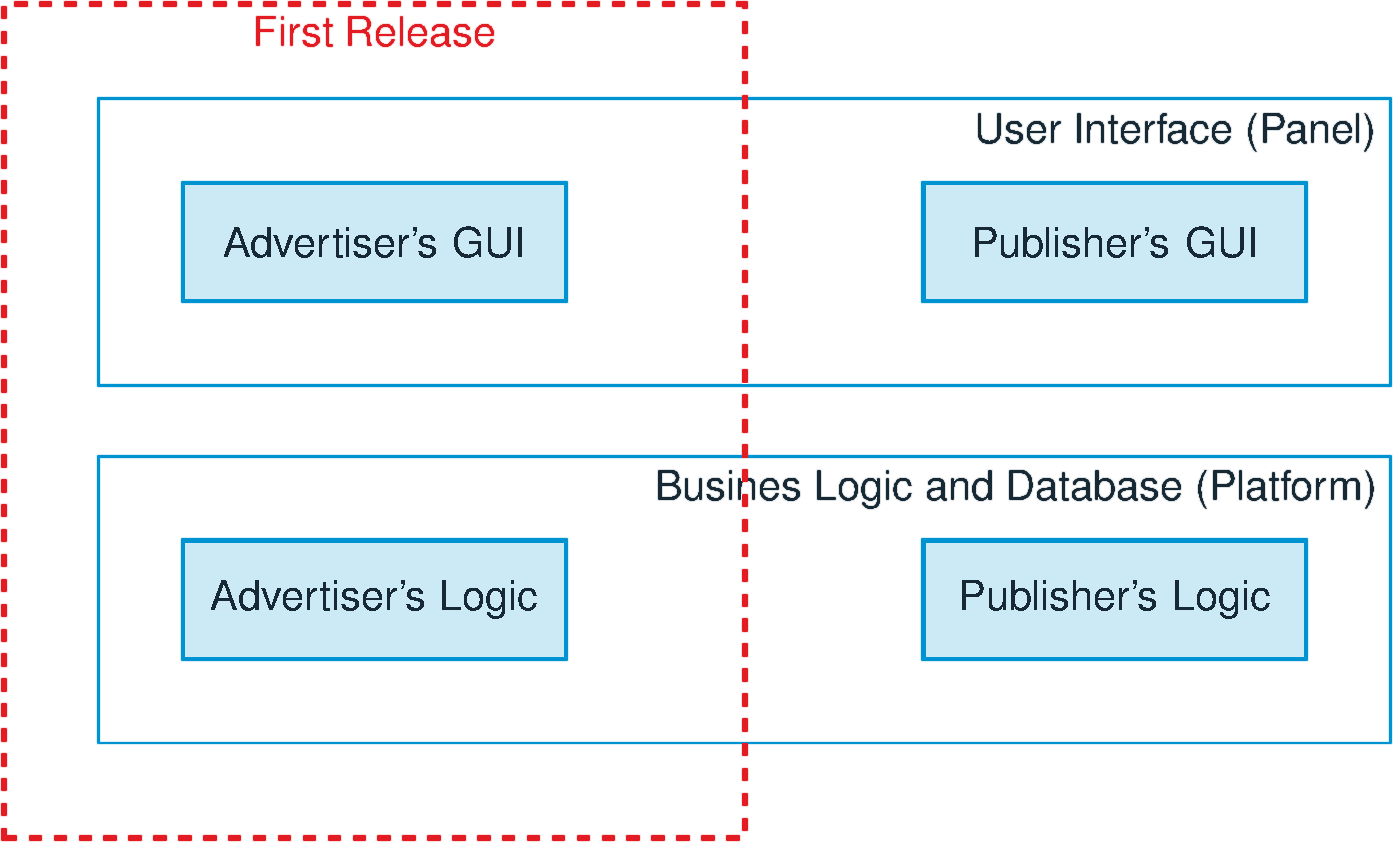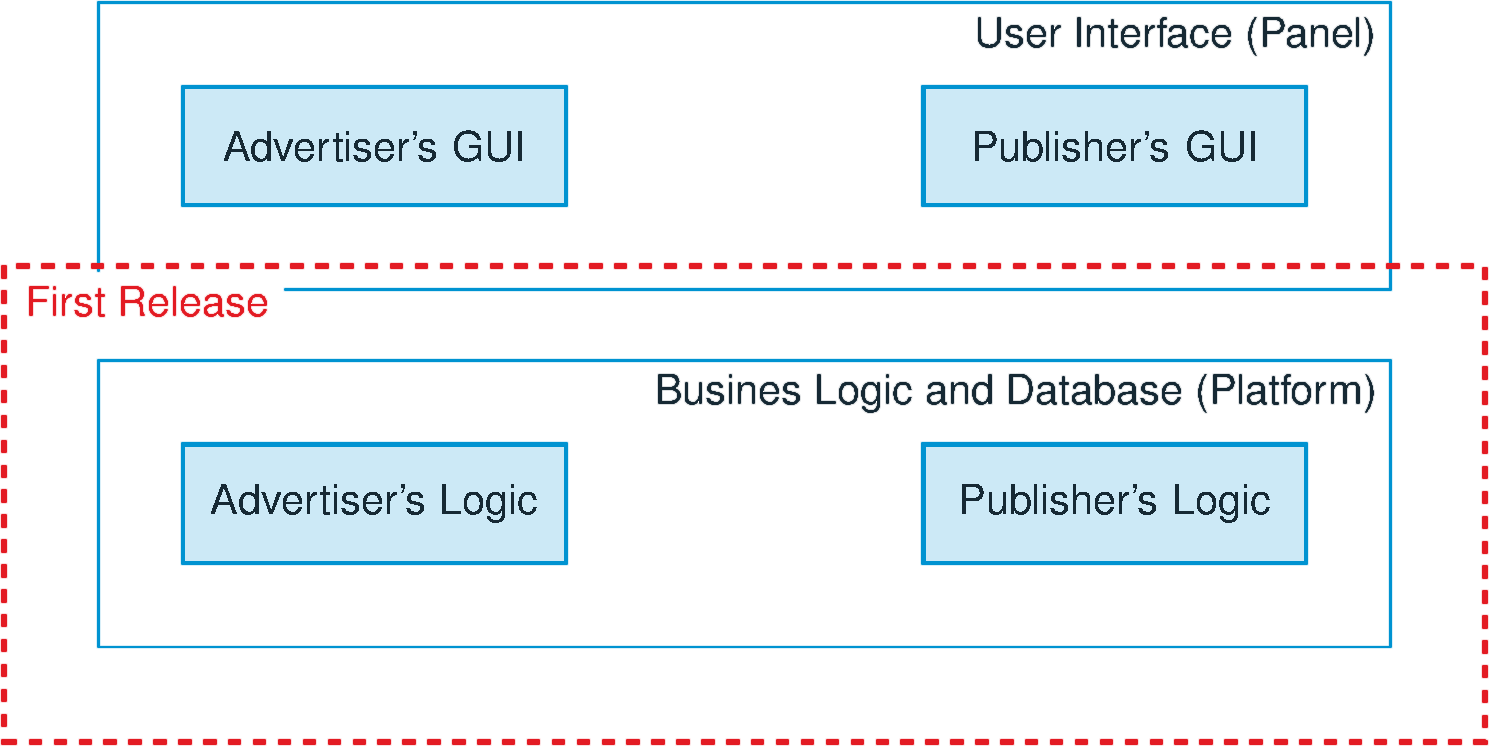Early Architecture Decomposition
The main project's outcome was an on-line ad serving program for Advertisers and Publishers, which would give them the ability to manage ads and financial statistics.
The key objective of the project was to get an effective system, which would allow registered users to make on-line advertisements more effective by means of creating, managing, tracking, controlling and reporting ad popularity and financial statistics.
The main constraint of the project was the inconsistency of the customer's requirement amount and amount of the initial budget. That's why we decided to divide the scope of the whole system into several releases. The first release was to provide only minimal functionality of the system that would allow the customer to put it to work and earn some revenue.
We also decided to separate the database and the main business functions from the user interface because we expected a high load of statistic modules (800-1200K queries a day). All control and statistic queries were to work through XML calls.

First we tried to define the first release scope as all the advertisers' functions and some minor publishers' functions to make the system work. But with architecture elaboration we understood that the main project objective (get the ability to put the system to work and earn revenue) could not be reached while the Publisher's logic was not implemented.

So we decided to define the first release scope as all main business logic, database structure and some minor user interface functions.
This early architecture decomposition of the system saved 400 staff-hours that could be spent for later implementation of the Publishers' logic.
It's very important for us to decide how a system will look before we start implementation. We usually spend a lot of time on system definition, architecture elaboration and decomposition. In this way we appreciably decrease project risk scores and save budget.